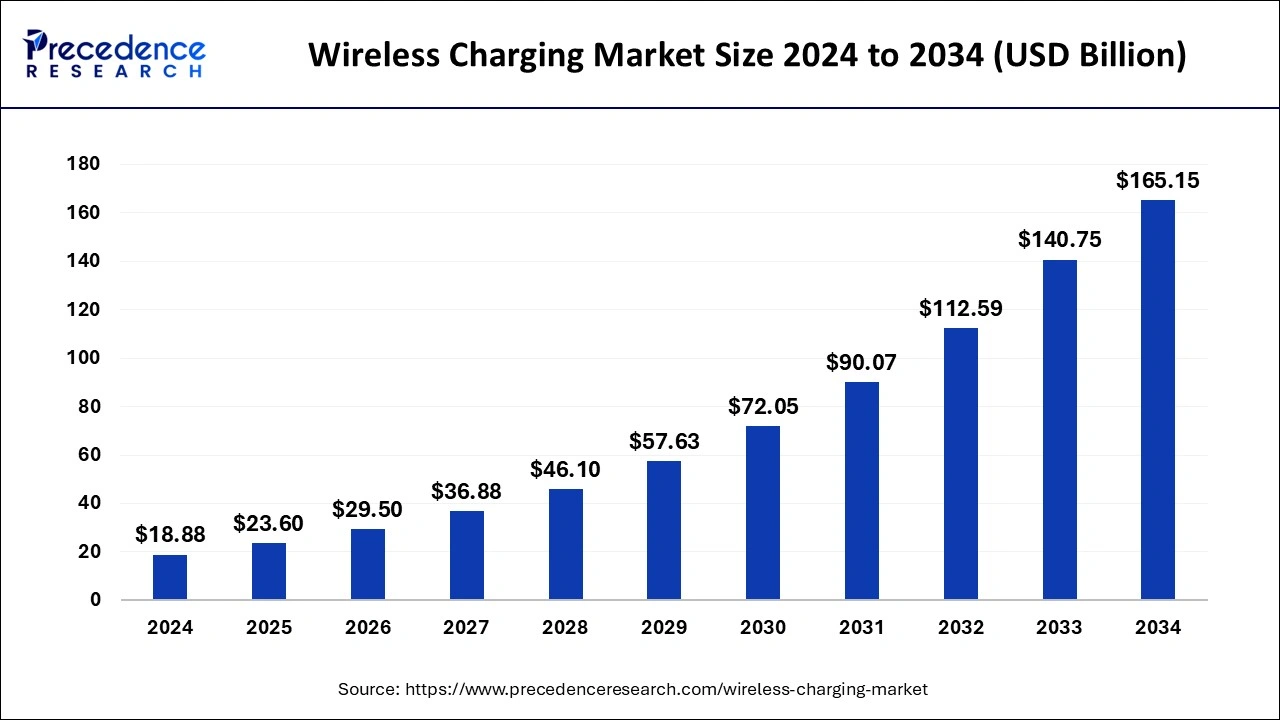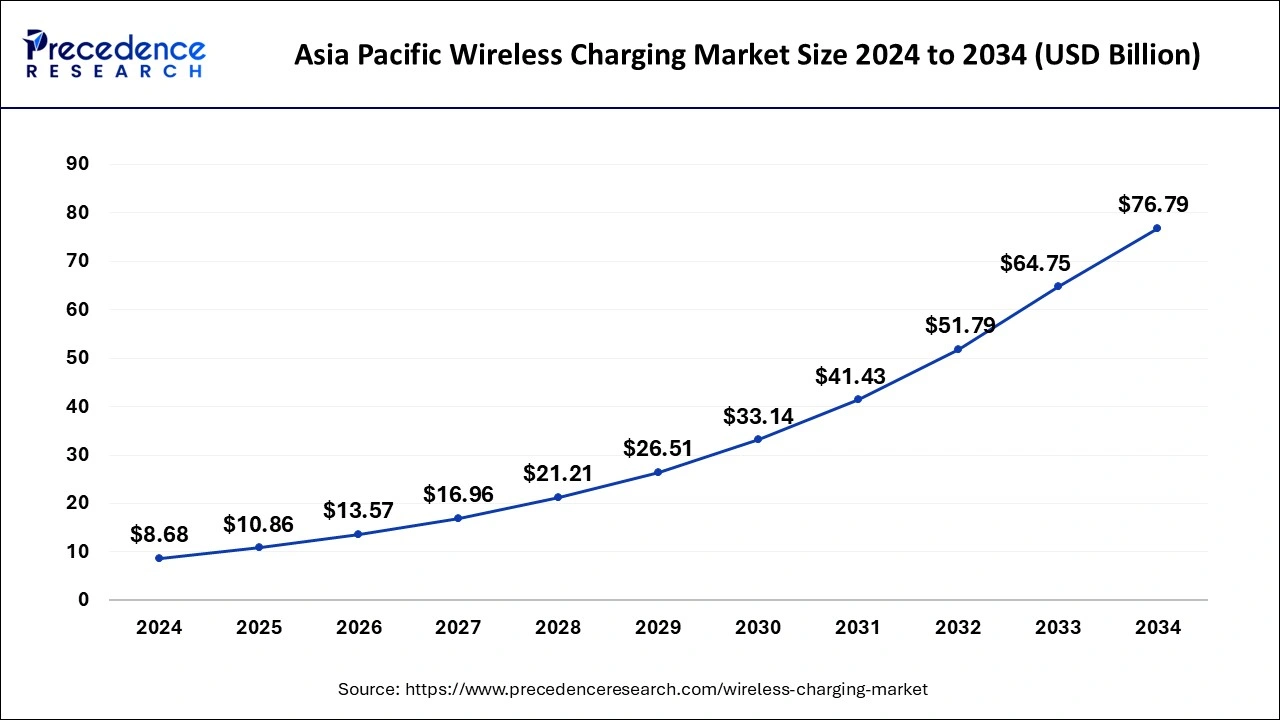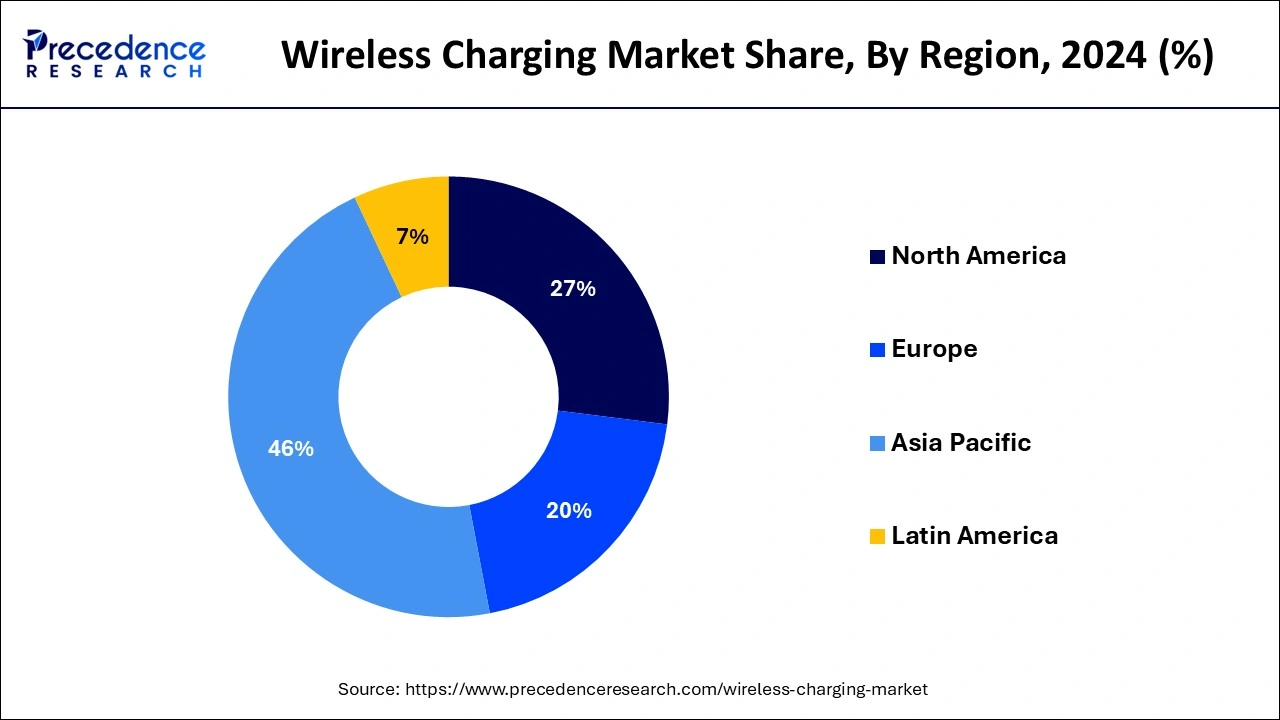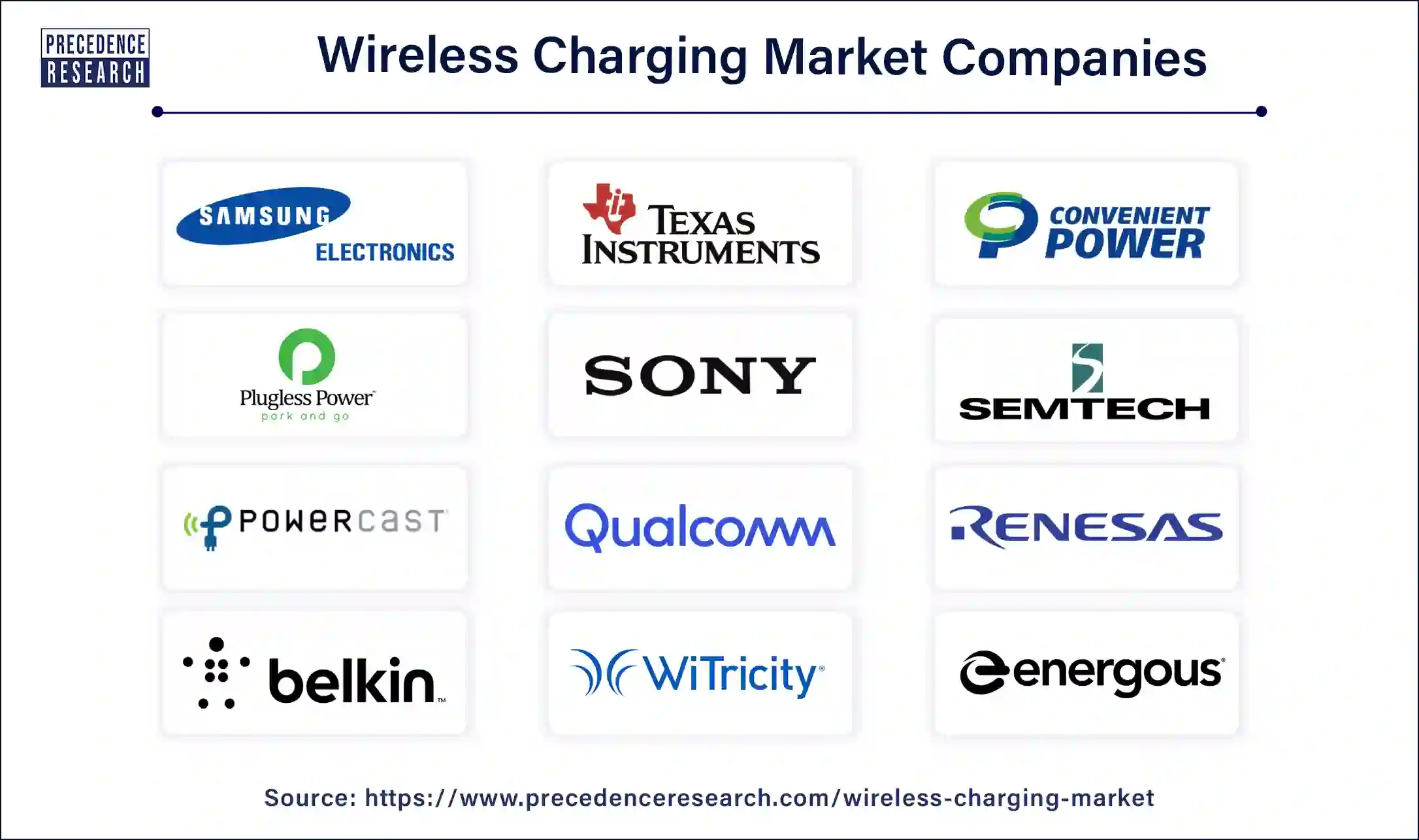January 2025
The global wireless charging market size is estimated at USD 23.60 billion in 2025 and is predicted to reach around USD 165.15 billion by 2034, accelerating at a CAGR of 24.22% from 2025 to 2034. The Asia Pacific wireless charging market size surpassed USD 10.86 billion in 2025 and is expanding at a CAGR of 24.36% during the forecast period. The market sizing and forecasts are revenue-based (USD Million/Billion), with 2024 as the base year.
The global wireless charging market was valued at USD 18.88 billion in 2024 and is anticipated to reach around USD 165.15 billion by 2034, registering a CAGR of 24.22% from 2025 to 2034. Technological advancements and rising usage of consumer electronics is driving the wireless charging market.

One of the main factors changing the wireless charging device industry is the combination of automation and artificial intelligence (AI). Predictive maintenance and intelligent energy management are two ways AI is being used to improve charging process efficiency. Manufacturing and quality control procedures are becoming more efficient thanks to automation technologies, which also lower costs and increase output. The performance and dependability of wireless charging systems are enhanced by these technical developments, which also promote innovation and increase the devices' variety of uses, which boosts market expansion overall.
The Asia Pacific wireless charging market size surpassed USD 8.68 billion in 2024 and is projected to hit around USD 76.79 billion by 2034, with a remarkable CAGR of 24.36% from 2025 to 2034.

Asia Pacific dominated the wireless charging market in 2024. Rapid economic growth and urbanization in the Asia-Pacific region have led to increased disposable incomes and a higher standard of living, which translates to greater consumer spending on advanced technologies, including wireless charging. The automotive industry in the Asia-Pacific region is increasingly integrating wireless charging solutions, especially for electric vehicles (EVs). Additionally, the healthcare sector is adopting wireless charging for medical devices, further driving market growth.

Europe is expected to witness a notable rate of growth in the wireless charging market in the coming years owing to the increasing investment in wireless charging infrastructure for EVs, rising awareness regarding the benefits associated with wireless charging in technology, favorable government policy, and increasing penetration of internet of things (IoT). The European countries have experienced robust demand for tablets, smartphones, wearables, electric vehicles, and other wireless charging-enabled devices. Moreover, rapid technological advancement and growing innovations in the automotive and consumer electronics sectors are projected to propel the expansion of the region's wireless charging market.
In the era of digitalization, wireless charging is rapidly gaining momentum in portable devices as it does not require a wired connection. Wireless charging is the process of electrically charging battery-powered devices, including smartphones, laptops, wearable tech, digital cameras, and electric vehicles, eliminating the need for cables to charge a device. In wireless charging, the battery-powered device can be charged by placing the device close to a wireless power transmitter or at a designated charging station. The use of wireless charging technology offers both convenience and reliability.
| Report Coverage | Details |
| Market Size in 2025 | USD 23.60 Billion |
| Market Size by 2034 | USD 165.15 Billion |
| Market Growth Rate from 2025 to 2034 | CAGR of 24.22% |
| Largest Market | Asia Pacific |
| Base Year | 2024 |
| Forecast Period | 2025 to 2034 |
| Segments Covered | Technology, Application, and Regions |
| Regions Covered | North America, Europe, Asia-Pacific, Latin America, and Middle East & Africa |
Rising demand for consumer electronics
The growing demand for consumer electronics around the world is expected to drive the growth of the wireless charging market during the forecast period. Wireless charging has gained considerable attention as a safe technology for powering and charging electrical devices. The increasing use of electronic devices such as laptops, tablets, smartphones, wearable gadgets, and other portable electronic devices that require regular charging has led to the development of wireless charging technologies.
Wireless power technology allows users to charge consumer electronic devices quickly and conveniently, and it eliminates the need for a cable. Wireless charging technology is considered safer than conventional cable charging as it significantly reduces the possibility of electrical shock or fire threats as well as contributes to lower energy costs. Thus, the rising use of consumer electronics globally is expected to supplement the wireless charging market growth during the forecast period.
High cost of installing wireless charging systems for EVs
The high cost required for wireless charging systems for electric vehicles (EVs) is anticipated to hamper the market's growth. A high initial cost is needed for installing wireless power transfer technology as it is to be installed beneath the surface of a vehicle parking area to enable vehicle charging. In addition, middle- and lower-income countries are reluctant to opt for these technologies due to budget constraints, which are likely to limit the expansion of the global wireless charging market.
Rising adoption of wireless charging for EVs
The increasing popularity of wireless charging for electric vehicles across the globe is projected to offer immense growth opportunities to the wireless charging market during the forecast period. The rising production and sales of EVs led to a surging demand for wireless charging technology. Gradually, EV charging technology is poised for a transformative shift from wired charging solutions in which drivers plug in a cable to recharge the car’s battery to wireless charging. Wireless EV charging has no wires, charges EVs quickly and safely, eliminates range anxiety, and provides more convenience.
Technology companies, original equipment manufacturers (OEM), automakers, and charging infrastructure providers are recognizing their immense potential, which is likely to boost the market expansion for wireless EV charging. Some of the Major Players in the EV Wireless Charging Industry are Continental AG, Daihen Corporation, Delachaux Group, Electreon, Inc., ELIX Wireless, HEVO, Inc., and WAVE, Inc. The market has also witnessed heavy investment by several market players to advance the wireless charging ecosystem. This will accelerate the wireless charging market growth during the forecast period.
The inductive segment held the largest segment of the wireless charging market in 2024. In inductive charging, the electromagnetic field is generated by two coils (transmitter and receiver) that transmit the energy. This technology offers ease of positioning devices onto charging pads and eliminates the need for wired connections. The wireless smartphone charging pads often make use of inductive charging. Thereby driving the growth of the segment.
In the wireless charging market, the radio frequency segment is expected to grow significantly during the forecast period. Radio frequency technology is capable of charging several devices simultaneously within its coverage area without the need for any cable by putting the receiver at the same frequency as the transmitter.
The consumer segment dominated the wireless charging market in 2024 and is expected to maintain its position in the market over the forecast period. The growth of the segment is majorly driven by the rising use of consumer electronics devices such as smartwatches, smartphones, and others globally. Wireless charging technology is user-friendly and offers convenience to the gadget users. Moreover, rapid technological innovation and increasing investment are likely to fuel the market’s growth.
The healthcare segment is expected to grow at a significant rate in the wireless charging market during the forecast period owing to the increasing adoption of IoT devices in the healthcare sector. The market has witnessed the growing demand for wireless charging technology in the healthcare industry to boost efficiency and improve the performance of medical equipment and devices.

By Technology
By Application
By Geography
For inquiries regarding discounts, bulk purchases, or customization requests, please contact us at sales@precedenceresearch.com
No cookie-cutter, only authentic analysis – take the 1st step to become a Precedence Research client
January 2025
November 2024
July 2024